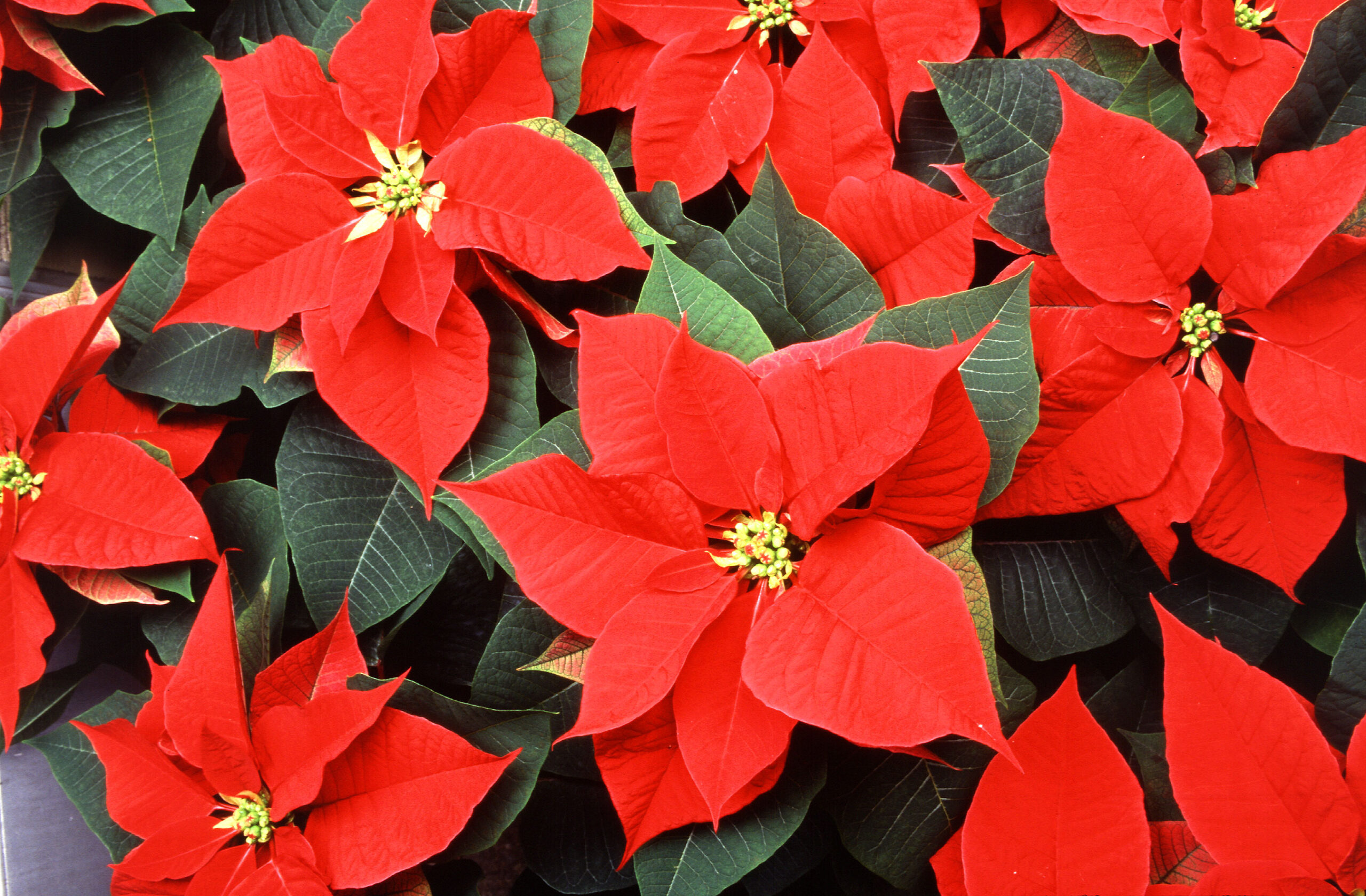Poinsettia: America’s No. 1 potted flower is relative newbie to holidays

COLUMBIA, Mo. — Poinsettia is America’s most popular flowering plant, with annual sales approaching $200 million. Despite its close association with the Christmas season, however, it’s a relative newcomer as holiday home decor, said University of Missouri Extension horticulturist David Trinklein.
In the early 1800s, the U.S. ambassador to Mexico, Joel R. Poinsett, learned of a red-flowered plant used in nativity processionals by Franciscan priests near the town of Taxco, about 100 miles southwest of Mexico City. Upon visiting Taxco, he found the plant growing wild on the hillsides.
Captivated by its beauty, Poinsett sent some of the plants to his greenhouses in South Carolina and others to botanical gardens and horticulturists around the United States. In recognition of his efforts, the plant ultimately was named poinsettia.
“The subsequent development of poinsettia as a flowering plant can largely be credited to Albert Ecke, a German immigrant who grew cut flowers in southern California in the early 20th century,” Trinklein said. Upon his passing, Ecke’s son Paul took over the family business and began the transformation of poinsettia from a cut flower produced outdoors to a potted greenhouse plant.
“Poinsettia is now available in a myriad of colors ranging from deeper and truer reds to pastel or ‘designer’ colors aimed at complementing the modern color schemes of homes,” Trinklein said. “Add to that the wide array of bi-colored, speckled and novelty colors, and there truly is a poinsettia for everyone, regardless of taste. Additionally modern poinsettias have been developed to have a free-branching growth habit, early flowering and greater longevity in the home.”
When selecting a poinsettia, choose a plant with crisp, healthy foliage. The true flowers, or cyathia, are in the center of the colorful bracts. These should be tightly clustered and, preferably, just starting to shed pollen.
Place the poinsettia in a brightly lit location away from cold drafts. High humidity and temperatures of 60 F at night and 72 during the day will prolong bract color. Water only when the surface of the growing medium is dry to the touch. In a normal home, this would be once every five to seven days. Poinsettias do not like “wet feet,” so be sure discard water that might collect in a saucer placed under the pot. If the pot is covered in foil, make sure there is a drainage hole in the foil.
Saving a poinsettia and re-blooming it the following year is no easy task. If you are up to the challenge, then take good care of your plant through the spring and summer, watering it and feeding it well. Next, cut back the plant severely (6-8 inches) around Labor Day to make for a more compact plant when it flowers.
Poinsettias need 13 hours of uninterrupted darkness each day to flower. One way to accomplish this is to place your poinsettia in a dark closet every evening and remove it the following morning, starting in late September. Once color development is well under way, this “long night” treatment can be discontinued.
Finally, contrary to the belief of some, poinsettias are not poisonous, said Trinklein. Extensive testing at Ohio State University resulted in a clean bill of health for the poinsettia. “So, enjoy your holidays by including a poinsettia as a part of your decor,” he said. “You will be just one of millions of Americans who carry on this ‘newfound’ holiday tradition.”
Miss Clipping Out Stories to Save for Later?
Click the Purchase Story button below to order a print of this story. We will print it for you on matte photo paper to keep forever.

